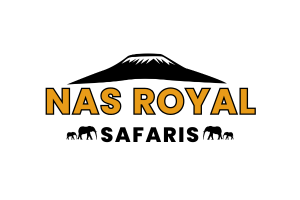
Mount Kilimanjaro: standing at an awe-inspiring 5,895 meters (19,341 feet), is not only the highest peak in Africa but also one of the most iconic mountains in the world. With its snow-capped summit rising above the Tanzanian savannah, Kilimanjaro attracts adventurers, climbers, and nature enthusiasts from all corners of the globe. Whether you are planning to conquer its summit or simply explore its magnificent landscapes, NasRoyal Safaris offers you an unforgettable journey to this majestic peak.
Why Climb Kilimanjaro?
Climbing Mount Kilimanjaro is a once-in-a-lifetime experience. What sets this mountain apart from other high-altitude climbs is that it doesn’t require advanced technical skills or mountaineering expertise. Kilimanjaro’s slopes offer routes that can be navigated by hikers of various skill levels. It is one of the few mountains in the world where you can start your journey in a tropical rainforest and, within a few days, reach a snowy summit, all without the need for technical equipment like ropes or ice picks.
The allure of Kilimanjaro is more than just its height its diverse ecosystems, rich flora and fauna, and stunning vistas make it a perfect blend of adventure and nature. But as with any major undertaking, preparation is key. In this guide, we’ll walk you through the essential details to help you get the most out of your Kilimanjaro adventure.
When to Go
The best time to climb Mount Kilimanjaro is during the dry seasons, which typically run from January to March and June to October. These months offer clear skies and pleasant weather conditions, which are ideal for summiting. The rainy seasons, from April to May and November to December, should be avoided as the trails become slippery and visibility is poor. However, if you don’t mind a bit of rain and want to avoid the crowds, a rainy season trek can offer a more serene experience.
Routes to the Summit
There are several routes to choose from when climbing Kilimanjaro. NasRoyal Safaris recommends selecting the right route based on your fitness level, time, and desired experience. Below are some popular routes:
-
Marangu Route (Coca-Cola Route): This is the easiest and most popular route, especially for beginners. The Marangu route has hut accommodations along the way, making it more comfortable, but it also has a higher failure rate due to the shorter ascent time.
-
Machame Route (Whiskey Route): A more challenging, scenic option that provides a better acclimatization profile. This route is favored by those seeking a more rugged adventure.
-
Lemosho Route: Considered one of the most scenic and diverse routes, the Lemosho route offers plenty of time for acclimatization and a greater chance of reaching the summit.
-
Rongai Route: The only route that approaches Kilimanjaro from the north. It’s less crowded and offers stunning views, especially of the Kenyan plains.
Each route has its own unique appeal, and your NasRoyal Safaris guide will help you choose the best fit for your personal adventure goals.
Preparing for the Climb
Climbing Kilimanjaro is no small feat, and proper physical and mental preparation is essential. Start a fitness regimen a few months in advance, focusing on cardio and leg strength. Hiking, stair climbing, and even long walks with a backpack are great ways to build stamina.
Acclimatization is key to avoiding altitude sickness, which affects many climbers. NasRoyal Safaris emphasizes slow, steady progress, ensuring you spend enough time at each altitude before moving higher. The slower you ascend, the better your chances of reaching the summit successfully.
What to Pack
Packing the right gear is essential for a successful summit. Here’s a basic list of what you’ll need:
-
Clothing: Layered clothing for varying weather conditions (base layer, insulating layer, waterproof layer).
-
Footwear: Sturdy, well-worn hiking boots with good ankle support.
-
Sleeping Gear: A quality sleeping bag rated for cold temperatures.
-
Waterproof gear: Waterproof jacket, pants, and gloves.
-
Snacks: Energy-rich snacks like nuts, energy bars, and dried fruits.
-
Headlamp: Useful for early morning and night-time treks.
-
Sunscreen: High SPF for protection against the sun at higher altitudes.
The Kilimanjaro Summit
Reaching the summit of Mount Kilimanjaro is an unforgettable experience. The final ascent to Uhuru Peak typically starts at midnight and takes 5-7 hours. The effort is worth it as the view from the top an expansive, snow-covered crater surrounded by a vast African landscape is unparalleled.
Whether you’re looking for an exhilarating challenge or simply wish to experience the stunning beauty of Tanzania, Mount Kilimanjaro offers something for every type of adventurer. With proper planning, a knowledgeable guide from NasRoyal Safaris, and determination, summiting Kilimanjaro is within reach. Your adventure begins here, prepare to experience the magic of Africa’s rooftop like never before.
